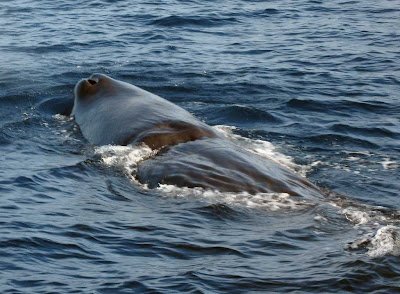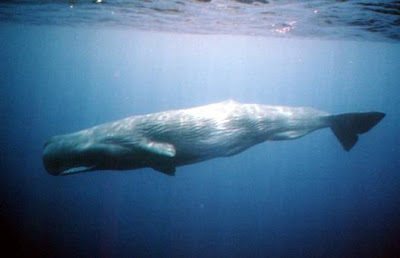The Life of Animals | Sperm Whale | The sperm whale, Physeter macrocephalus, is a marine mammal species, order Cetacea, a toothed whale (odontocete) having the largest brain of any animal. The name comes from the milky-white waxy substance, spermaceti, found in the animal's head. The sperm whale is the only living member of genus Physeter. It is one of three extant species in the sperm whale superfamily, along with the pygmy sperm whale and dwarf sperm whale.
A bull can grow to 20.5 metres (67 ft) long. It is the largest living toothed animal. The sperm whale's clicking vocalization is the loudest sound produced by any animal, but its functions are uncertain. These whales live in groups called pods. Pods of females and their young live separately from older males. The sperm whale has few natural predators, since few are strong enough to successfully attack a healthy adult; orcas attack pods and kill calves. The sperm whale can live for more than 70 years.
Historically, the sperm whale was also known as the common cachalot; "cachalot" is derived from an archaic French word for "tooth". Over most of the period from the early 18th century until the late 20th century, the sperm whale was hunted to obtain spermaceti and other products, such as sperm oil and ambergris. Due to its size, the sperm whale could sometimes defend itself effectively against whalers. In the most famous example, a sperm whale attacked and sank the American whaleship Essex in 1820. As a result of whaling, the sperm whale is currently listed as vulnerable by the IUCN. The name sperm whale is an apocopation of spermaceti whale. The sperm whale is the largest toothed whale, with adult males measuring up to 20.5 metres (67 ft) long and weighing up to 57,000 kilograms (56 long tons; 63 short tons). By contrast, the second largest toothed whale, Baird's Beaked Whale measures 12.8 metres (42 ft) and weighs up to 15 short tons (14,000 kg) The Nantucket Whaling Museum has a 5.5 metres (18 ft)-long jawbone.
At birth both sexes are about the same size but mature males are typically 30% to 50% longer and three times as massive as females The sperm whale has 20 to 26 teeth on each side of its lower jaw The teeth are cone-shaped and weigh up to 1 kilogram (2.2 lb) The purpose of the teeth is unknown. Teeth do not appear to be necessary for capturing or eating squid, and well-fed animals have been found without teeth. The brain is the largest known of any modern or extinct animal, weighing on average about 8 kilograms (18 lb), though the sperm whale has a lower encephalization quotient than many other whale and dolphin species, lower than that of non-human anthropoid apes, and much lower than humans'. Like other toothed whales (suborder odontoceti), sperm whales use echolocation as one means to find food because their habitat has favorable acoustic characteristics, and light absorption by water and suspended material limits visual range. The whale emits a focused wide angle beam of high-frequency clicks. The lower jaw is the primary echo reception path. The sperm whale is among the most cosmopolitan species. It prefers ice-free waters over 1,000 metres (3,300 ft) deep Although both sexes range through temperate and tropical oceans and seas, only adult males populate higher latitudes It inhabits the Mediterranean Sea, but not the Black Sea while its presence in the Red Sea is uncertain The shallow entrances to both the Black Sea and the Red Sea may account for their absence The Black Sea's lower layers are also anoxic and contain high concentrations of sulphur compounds such as hydrogen sulphide
Coastal areas with significant sperm whale populations include the Azores and the Caribbean island of DominicaSperm whales can live 70 years or more.Calves can suckle from females other than their mothers Females generally have birth intervals of three to six years Females reach sexual maturity between 7 and 13 years; males follow beginning at 18 years. Females remain at lower latitudes Males reach their full size at about age Sperm whales are not the easiest of whales to watch, due to their long dive times and ability to travel long distances underwater. However, due to the distinctive look and large size of the whale, watching is increasingly popular. Sperm whale watchers often use hydrophones to listen to the clicks of the whales and locate them before they surface.





No comments:
Post a Comment